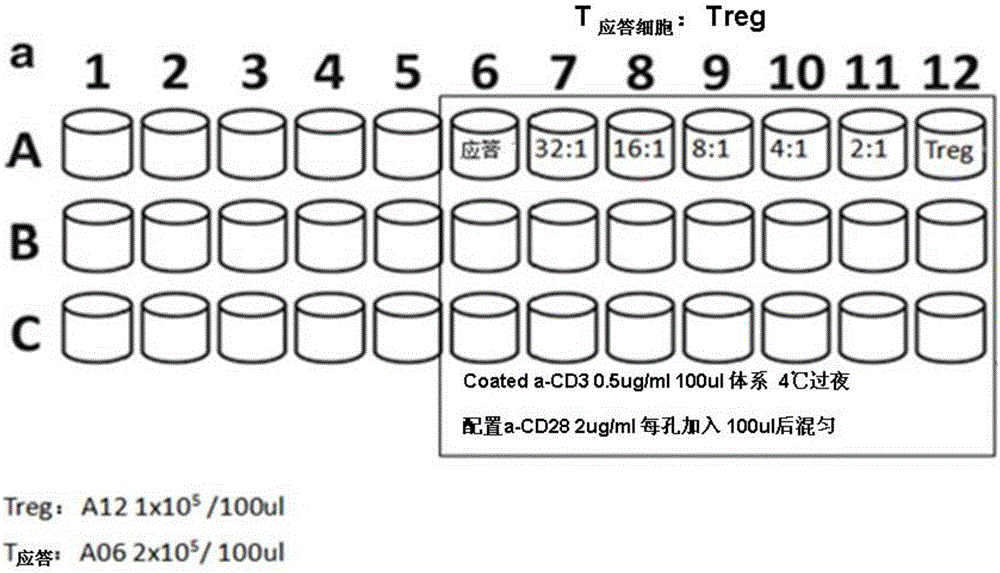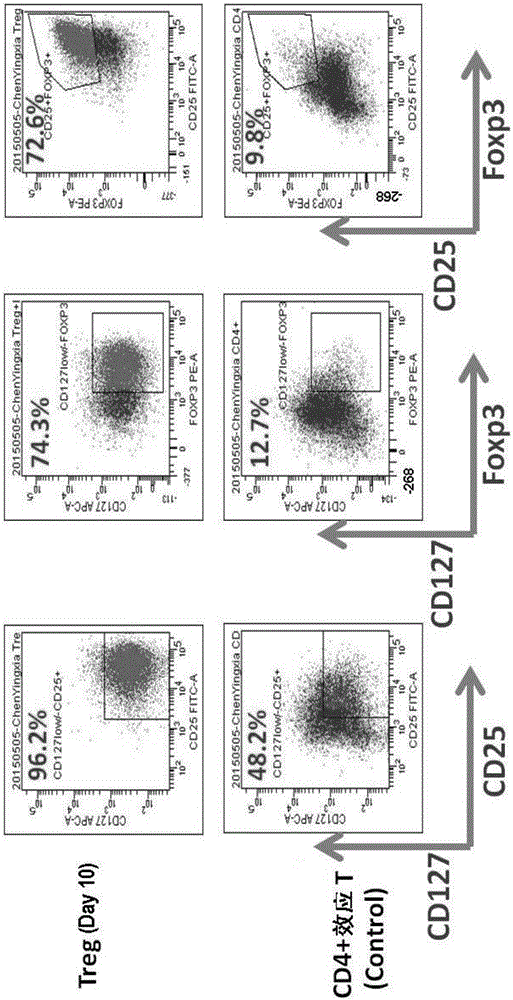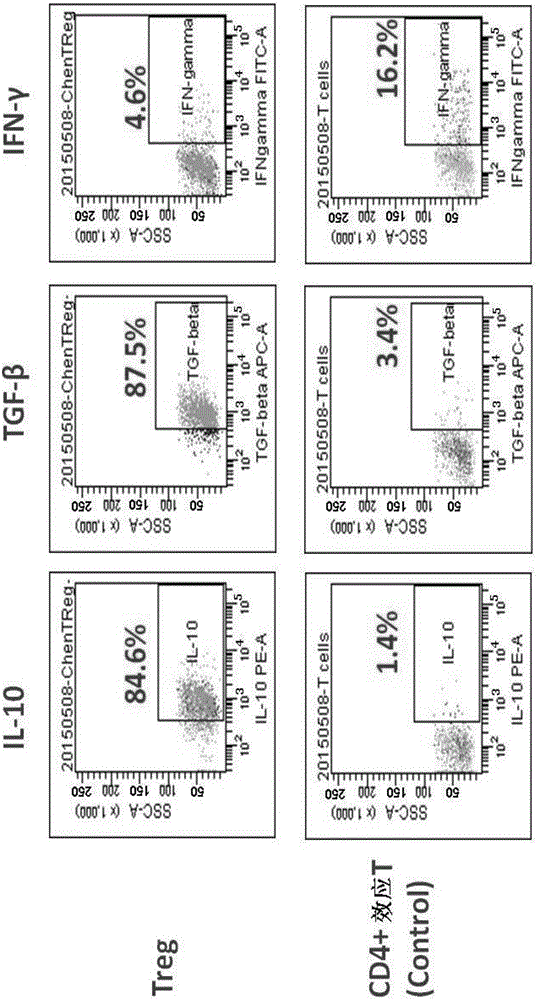Optimized method for inducing amplification of regulatory T cells from naive T cells
A cell induction and regulation technology, applied in the field of bioengineering, can solve problems such as poor stability, long amplification induction cycle, complicated operation, etc., to avoid biosafety problems and immune rejection, amplification and therapeutic effects Stability, operation time saving effect
- Summary
- Abstract
- Description
- Claims
- Application Information
AI Technical Summary
Problems solved by technology
Method used
Image
Examples
Embodiment 1
[0023] According to the optimized method of inducing and expanding regulatory T cells from naive T cells of the present invention, the specific steps are as follows:
[0024] Step 1. Coating with anti‐CD3 antibody
[0025] 24h to 1h before cell culture, add PBS (phosphate-buffered saline) containing 0.1-2 μg / ml (preferably 1 μg / ml) anti-CD3 (OKT3, eBioscience) antibody to each well of a U-shaped or flat-bottomed culture plate, Add 1ml for 24-well plates, and convert according to volume or bottom area for other well plates. Store at 4°C until use.
[0026] Step 2. Isolation of Peripheral Blood Mononuclear Cells (PBMCs)
[0027] Draw 20ml of heparin anticoagulated venous blood, take three 15ml centrifuge tubes, add 4ml of lymphocyte separation solution to each tube, slowly place 6-7mL peripheral blood on the layer of lymphocyte separation solution along the tube wall, and centrifuge at 800g for 17min, respectively. Plasma and PBMC were collected, plasma was inactivated in a w...
PUM
 Login to View More
Login to View More Abstract
Description
Claims
Application Information
 Login to View More
Login to View More - R&D
- Intellectual Property
- Life Sciences
- Materials
- Tech Scout
- Unparalleled Data Quality
- Higher Quality Content
- 60% Fewer Hallucinations
Browse by: Latest US Patents, China's latest patents, Technical Efficacy Thesaurus, Application Domain, Technology Topic, Popular Technical Reports.
© 2025 PatSnap. All rights reserved.Legal|Privacy policy|Modern Slavery Act Transparency Statement|Sitemap|About US| Contact US: help@patsnap.com



